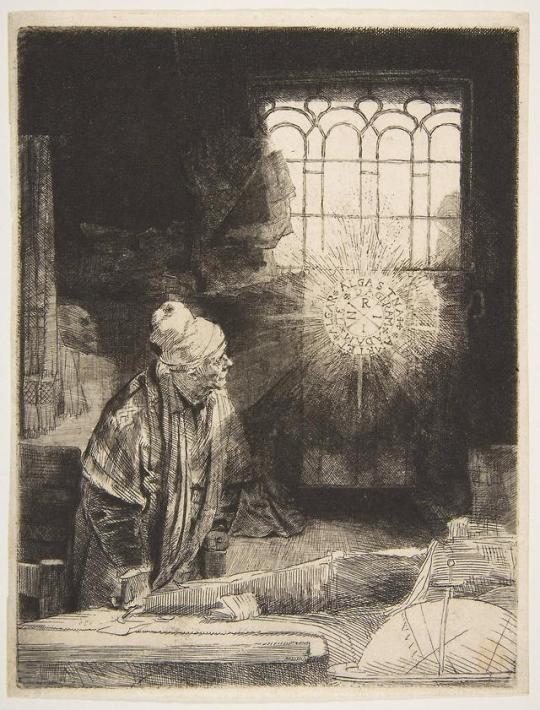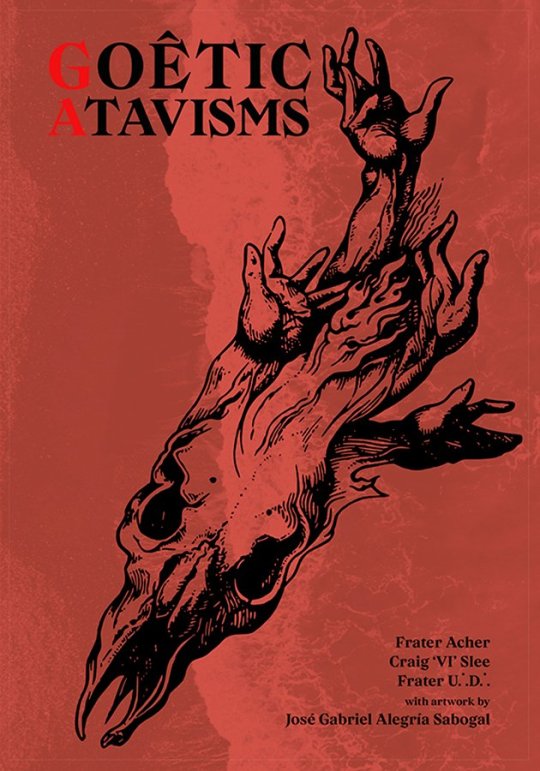#zosimos of panopolis
Explore tagged Tumblr posts
Text

I love finding this at the same time as I'm writing notes on theurgy again. Zosimos comes up throughout my notes when I bring up alchemy and fallen angels. This ought to be good.
3 notes
·
View notes
Text
Reading the Hermetica: Various Other Hermetic Fragments and References (DH 11, VH, TH, FH)
For this week’s Reading the Hermetica discussion, we’re taking a look at a wide variety of miscellaneous and various texts not otherwise easily categorizable so far, including some of the even lesser-known abbreviations of texts (e.g. VH or TH), but with a focus on what we might call “Miscellaneous Hermetic Fragments” (FH). As ever, if you don’t have a copy of Litwa’s Hermetica II or…
#cyril of alexandria#definitions of hermes trismegistus to asclepius#hermetic fragments#hermetic testimonia#hermetic testimonies#lactantius#magic#reading the hermetica#suda#tubingen theosophy#vienna fragments#vienna hermetic fragments#zosimos#zosimos of panopolis
1 note
·
View note
Text
Zosimos of Panopolis definitely understood Alchemy as a religious practice, but I am increasingly of the opinion that whatever religion he was practicing, he was the only member.
465 notes
·
View notes
Text
Timeline of Occult Figures
Here is a non-exhaustive list of people you will likely come across in researching anything under Occultism.
These dates are not going to be 100% accurate because many of these folks have either lied about their age or for some reason or another we don't have solid records of them.
---
Pythagoras 570-490 BCE
Socrates 470-399 BCE
Plato 424/5-348/7 BCE
Aristotle 384-322 BCE
Apollonius of Tyana 15-97 CE
Pliny the Elder 23/24AD-79CE
Ptolemy 100CE-170CE
Galen 129-216CE
Zosimos of Panopolis ~beginning of the 4th century
Roger Bacon 1220-1292
Henry Agrippa 1486-1535
Nostradamus 1503-1566
John Dee 1527-1608
Paracelsus 1593-1608
Jacob Grimm 1785-1863
Eliphas Levi 1810-1875
Helena Blavatsky 1831-1891
A. E. Waite 1857-1942
Margaret Murray 1863-1963
Aleister Crowley 1875-1947
Gerald Gardner 1890-1946
Robert Graves 1895-1985
Austin Osman Spare 1886-1956
Scott Cunningham 1956-1993
---
This is a re-upload because I can't find the original post I made so any additions made on that post have been lost. Please let me know if you have suggestions!
249 notes
·
View notes
Text
MARY THE JEWESS // ALCHEMIST
“She was an early alchemist known from the works of Zosimos of Panopolis (fl. c. 300) and other authors in the Greek alchemical tradition. She is credited with the invention of several kinds of chemical apparatus and is considered to be the first true alchemist of the Western world.”

5 notes
·
View notes
Text
Zosimos and Theosebeia writing the Book of Keys in Panopolis

2 notes
·
View notes
Text




Zosimos of Panopolis, portrayed as an Alexandrian Scholar-Alchemist
by Midjourney v6
#Midjourney#Midjourney v6#Zosimus of Panopolis#Alexandria#Ptolemaic Alexandria#scrolls#alchemist#alchemy
3 notes
·
View notes
Text
Zosimos was active around 300 AD.10 He was born in the Upper Egyptian city of Panopolis, now called Akhmim. We know that he was not the first chrysopoeian, because his writings refer to earlier authorities, and even to rival “schools” of alchemical thought that had already developed by his time. (Of these other schools we know absolutely nothing save what he writes in criticism of them.)
– Lawrence M. Principe, The secrets of alchemy.
0 notes
Text
The Mystical Alchemy of Ancient Egypt: A Journey into the Roots of Transmutation
Alchemy, often regarded as the precursor to modern chemistry, has deep roots in the ancient civilizations, particularly in Ancient Egypt. The land of the pharaohs, known for its enigmatic pyramids and profound spirituality, is also where the early concepts of alchemy began to take shape. This mystical practice, shrouded in secrecy and symbolism, aimed at transforming base materials into noble substances and uncovering the secrets of eternal life.
The term "alchemy" itself is derived from the Arabic word "al-kīmiyā," which has its origins in the Ancient Egyptian word "khemia," referring to the fertile black soil of the Nile Delta. This connection underscores Egypt’s profound influence on the development of alchemical thought. Alchemy in Ancient Egyptian Healing Practices was not merely a proto-science but a spiritual discipline intertwined with the religious and philosophical systems of the time.
Central to Egyptian alchemy was the concept of transformation. The Egyptians believed that materials could be transmuted and perfected through a series of mystical and physical processes. This belief was mirrored in their practices of mummification and the quest for immortality. The process of preserving the body was seen as a transformation, preparing the deceased for eternal life, paralleling the alchemical goal of achieving perfection and enlightenment.
The Egyptian god Thoth, often depicted with the head of an ibis, was considered the patron deity of alchemy. Thoth, the god of wisdom, writing, and magic, was believed to have bestowed upon humanity the knowledge of alchemy. The "Emerald Tablet," attributed to Hermes Trismegistus (a syncretic figure combining elements of Thoth and the Greek god Hermes), is one of the most famous alchemical texts. Its maxim "As above, so below" encapsulates the belief that earthly transformations reflect and are influenced by the divine order.
The sacred city of Heliopolis, known for its sun temple and as a center of learning, was a crucial hub for alchemical studies. Here, priests and scholars delved into the mysteries of the natural world, seeking to understand and manipulate the elements. The practice of alchemy was closely guarded, with knowledge passed down through cryptic texts and oral traditions to preserve its sanctity and power.
Ancient Egyptian alchemy also had a profound influence on later alchemical traditions in the Greco-Roman world and beyond. The works of Zosimos of Panopolis, an Egyptian alchemist, are among the earliest extant writings on the subject. His texts, filled with symbolic Alchemy Ancient Egypt imagery and allegories, reflect the deep esoteric knowledge inherited from his Egyptian predecessors.
In conclusion, alchemy in Ancient Egypt was a rich tapestry of science, spirituality, and philosophy. It laid the foundational stones for future alchemical practices and contributed significantly to the development of early scientific thought. The Egyptian alchemists' quest for transformation and perfection, both material and spiritual, continues to captivate and inspire, echoing through the corridors of history as a testament to their enduring legacy.
0 notes
Text
That's a good question. Tough one to answer. Alchemy is kinda like physics in that over history there have been multiple conflicting theories that are all pretty important to learn about. Top of my head, I'd say:
Greco-Egyptian alchemy: Zosimos of Panopolis, Miriam of Alexandria.
Islamicate alchemy: Jabirian Corpus + Al-Kindi + Rhazes
Medieval European: Liber de compositione alchemiae + Parcelcian Corpus + Basil Valentine
Early Modern: Theatricum Chymicum + Ashmole + Newtonian alchemical corpus. Also read the Splendor Solis but I forget when that was published.
Tumblrs formatting is fucked up so here's the answer to your second question:
I would say it depends, but I would also say that for most of European history, occult beliefs and mystical systems are far, far more systematic than the average person understands.
The example I always point to here is Jewish Hekhalot literature. It's got spells that basically teach you how to ritually purify yourself, so you can invoke an angel and receive a specific boon. What makes it interesting to me, is that a spell might say "if you wish to charm a king, call X angel, and make a potion out of cloves and lions blood and speak the holy names."
And then the next line is "If you wish to charm a crowd, invoke X angel, but swap out the lions blood for the heart of a salmon, and then speak the holy names."
I would say it's systemic, but in the sense that campfire stories are systemic. if the goal is to spoon your listeners, that's not easily quantifiable, but there's still an underlying logic to telling a good scary story. There's a ton of variation based on the system, but I think the mechanism is inherently social and narrative, if that makes sense.
Hey @cryptotheism I have two mostly unrelated questions you might know the answer to.
What were the most important texts in alchemy? Like is there some small corpus where most of the ideas we associate with alchemy were principally articulated?
Based on your broader experience with mysticism and so on, how "systematic" did/do occult belief systems tend to be. Like on the "higher mathematics to interpretive dance" scale, how many rules and principles and so on did/do they have vs. free interpretation? Is there a lot of variation between different mystical belief systems.
If you have the time etc. to answer these I would be interested in the answers, etc.
289 notes
·
View notes
Text
The Philosophers of Fire
One of the central concepts in alchemy was the idea of the four elements: earth, air, water, and fire, which were believed to be the basic constituents of all matter. Among the alchemists, there were those who specialized in the element of fire, and they were known as the philosophers of fire. These alchemists believed that fire was the primary agent of change and transformation, and that it had…

View On WordPress
#alchemical symbolism#alchemist#alchemists#alchemy#fire#I was born in the fire#philosophers#philosophy#phoenix#purification#spirituality#sulfur#symbolism#the phoenix#transformation#zosimos#zosimos of panopolis
7 notes
·
View notes
Quote
The attempt to become a god is the Great Work of magic and alchemy. The belief that man can attain the divine while still in the body, with the parallel between this process and the transmutation of base metals to gold, was grafted on to the metalworking techniques of the ancient world by Gnostic Graeco-Egyptian alchemists. One of them, Zosimos of Panopolis in Egypt, writing about A.D. 300, describes a dream in which he saw a priest sacrificing at a dome-shaped altar at the top of fifteen steps. He heard the voice of the priest saying, 'I have accomplished the action of descending the fifteen steps toward the darkness, and the action of ascending the steps toward the light. The sacrifice renews me, rejecting the dense nature of the body. Thus consecrated by necessity, I become a spirit.' The priest said he had suffered unbearable violence. He had been dismembered with a sword. His bones had been mixed with his flesh and 'burned in the fire of the treatment' and so, through the transformation of the body, he had become a spirit... Later in the same dream, Zosimos saw a crowd of people immersed in boiling water on the altar, burned and wailing. He saw a man of copper holding a tablet of lead. A spectator told him that 'the men who wish to obtain virtue enter here and become spirits after having escaped from the body'. Waking from the dream, Zosimos tells the reader to build a temple 'as of white lead, as of alabaster, having neither commencement nor end in its construction. Let it have in its interior a spring of pure water, sparkling like the sun...' Then take a sword and find the narrow opening which is the entrance to the temple. A serpent lies at the entrance. Seize the serpent, kill him, flay him and use his body as a step to the entrance. You will find what you seek. The man of copper has become a man of silver and if you wish will become a man of gold.
Richard Cavendish - The Black Arts : A Concise History of Witchcraft, Demonology, Astrology, and Other Mystical Practices Throughout the Ages
31 notes
·
View notes
Text

I'm very excited to announce we have a special guest!
Next week Dr. Shannon Grimes, Professor of Religion at Meredith College, will be joining us live to discuss Zosimos of Panopolis and the history of Alchemy in Roman Egypt.
Check out her work here
Join us Friday June 13th at 10am Pacific to join in the fun
296 notes
·
View notes
Photo

Rembrandt van Rijn, The Magician (or: A Scholar in His Study) — 1650-54
* * *
“Let your body rest, calm your passions, resist desire, pleasure, anger, sorrow, and the dozen fatalities of death. In thus conducting yourself you will call to you the divine being, and the divine being will come to you, he who is everywhere and nowhere. . . . Operating in this manner you will obtain the proper, authentic, and natural tinctures. Make these things until you become perfect in your soul. But, when you recognize that you have arrived at perfection, then beware of the natural elements of the material: descending toward the Shepherd, and plunging into meditation, you will thus re-ascend to your origin.”
— Zosimos of Panopolis
#Zosimos of Panopolis#Wisdom#Alchemy#Rembrandt van Rijn#The Magician#A Scholar in his Study#Illustration#Art#Beauty
154 notes
·
View notes
Text
Goêtic Atavisms (pre-order)
It's hardback pre-order day, folks! If you want in on one of the 500 fine edition hardbacks, head over to Hadean Press and pre-order here. Now, for non UK folks, I suspect shipping may be pricey but keep an eye on folks like Miskatonic Books or similar if your're in NA. (I'll post here if I spot any) Shipping in July, and I suspect the paperback, which will also be available then may end up available through the Great Horror that is Amazon. Until then, click through the links or enjoy this sneaky peek at the paperback cover, blurb and video!

youtube
"Goêtic Atavisms is designed to be an uncompromising and challenging book.
Written in mutual exchange between practitioners Frater Acher and Craig Slee, two radical views and explorations of applied goêteia emerge. This tête-bêche book can be read from both sides; behind one cover containing the chapters by Acher, behind the other those by Craig Slee, and where they meet in the middle a preface by none other than Frater U∴D∴.
In their own unique voices, the authors draw the reader in and call on them to bring goêteia to life in their own flesh. Over twelve chapters, packed with historic detail and practical experimentations, the reader is guided to take a fresh look at such diverse bodies of goêtic work as Zosimos of Panopolis, Germanic and Old Iranian folklore, Goethe’s Faust and the Earth Spirit, Austin Osman Spare's œuvre, as well as modern forms of corporeality such as pornography, tattoo culture, and bodily disability. Goêtic Atavisms was written not only to be a sensual experience, but to facilitate magical touch."
64 notes
·
View notes